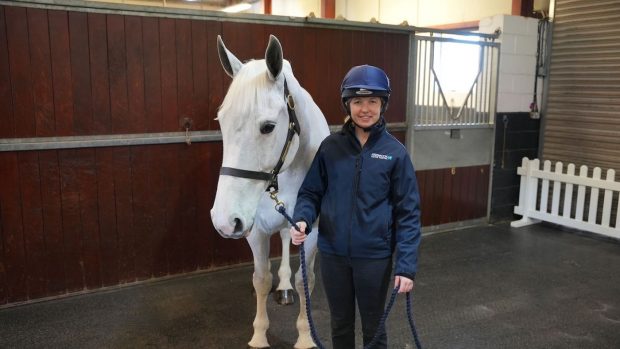Owners have been urged to treat horses for encysted small redworm before spring – or risk possibly fatal consequences.
A number of recent cases of serious disease caused by severe encysted small redworm infections have been reported, prompting Wendy Talbot, vet for animal health company Zoetis, to speak out.
The parasitic horse worm is ingested during grazing, then larvae survive in autumn and winter by burrowing into the walls of the intestine. Here they form cysts and their development pauses as they “hibernate” over the winter.
In spring, the larvae can erupt from their dormant state, to carry on their development, in large numbers. This causes damage to the walls of the intestine, which can lead to diarrhoea, weight loss and colic. The condition, larval cyathostominosis, can be fatal.
“Over the past few weeks I have heard of a number of cases of larval cyathostominosis,” Ms Talbot said. “Unfortunately people think their horses are safe from this parasite if they have had a recent, negative faecal worm egg count but this absolutely is not the case.
“Because encysted small redworm are hibernating, they won’t show in faecal worm egg counts. A horse could actually have a burden of several million encysted small redworm larvae yet show a negative or low count.”
There is no test for encysted small redworm, and all horses aged six months and over should be dosed for it, in late autumn or winter, and “certainly before spring”.
The two active ingredients licensed to treat encysted small redworm are a single dose of moxidectin or a five-day course of fenbendazole.
But there is widespread evidence of small redworm resistance to fenbendazole, so a resistance test is recommended before using it. Moxidectin is highly effective against adult small redworm including encysted larvae.
“It’s imperative to use the right worming product,” Ms Talbot said. “Treating with a wormer that does not specifically target the encysted stages (ivermectin, pyrantel or single dose fenbendazole) during late autumn and winter can actually increase the risk of a horse with a high encysted small redworm burden developing larval cyathostominosis.”
Continues below…

First test for encysted redworm in development
Scientists are working on a test for encysted redworm using saliva samples

Try something new in 2019 — take your horse on holiday
If you’re looking for something new to try with your horse this year, then we’re here to help. Sara Walker

Subscribe to Horse & Hound this spring for great savings
Owners are advised to discuss worming programmes and products with a vet or SQP (suitably qualified person) animal medicines advisor.
Cyathostominosis can occur in horses of any age, but there is a higher risk in horses under six. Cases usually involve “a history of poor pasture management”, as not poo-picking regularly can expose grazing horses to high levels of small redworms.
“It’s important to note that cyathostominosis can happen despite previous wormer administration, especially if the wormer is not effective against larval stages,” Ms Talbot said.
“Early clinical signs of cyathostominosis include poor weight gain and general ill-thrift at any time of year but particularly over the winter. If your horse has any clinical signs it is important that you contact your vet as soon as possible for advice.
“More advanced signs of disease include the onset of colic and diarrhoea, by which time the condition is already quite advanced. It is imperative any horse showing these signs is assessed by a vet as soon as possible and the appropriate treatment is given.”
For all the latest news analysis, competition reports, interviews, features and much more, don’t miss Horse & Hound magazine, on sale every Thursday.





